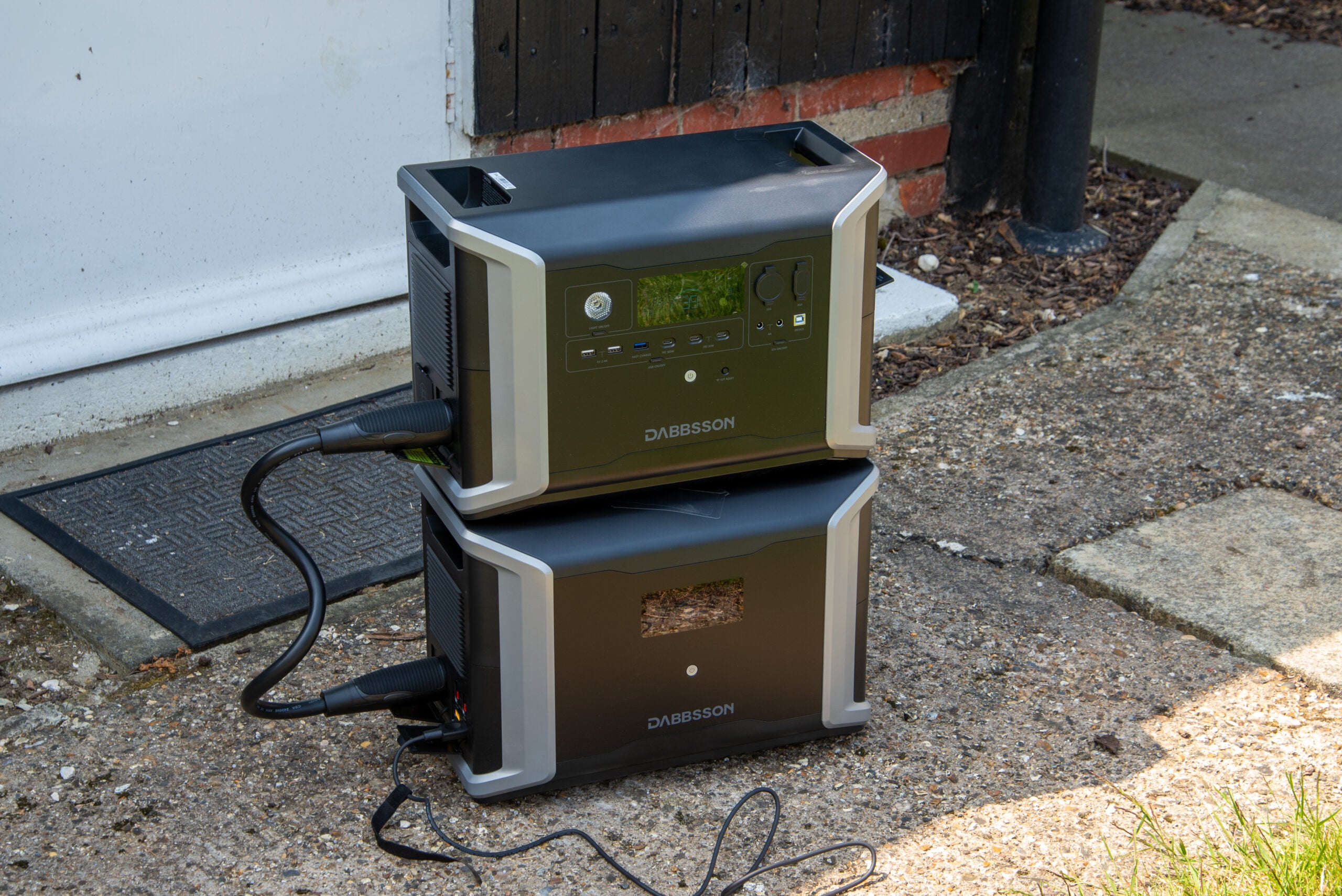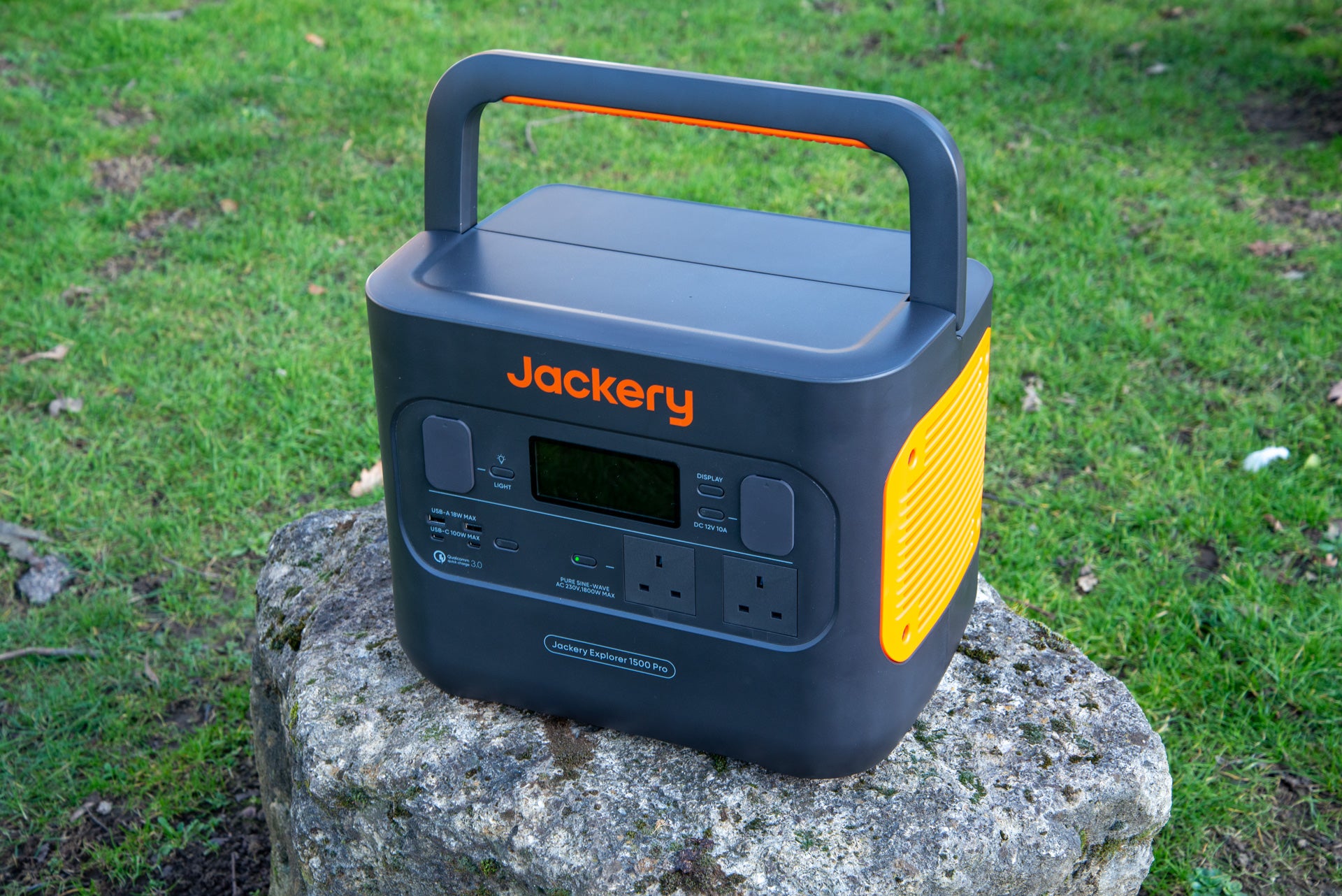Anker SOLIX F1200 (PowerHouse 757) Review
Rock-solid, medium-duty power for homes and camping
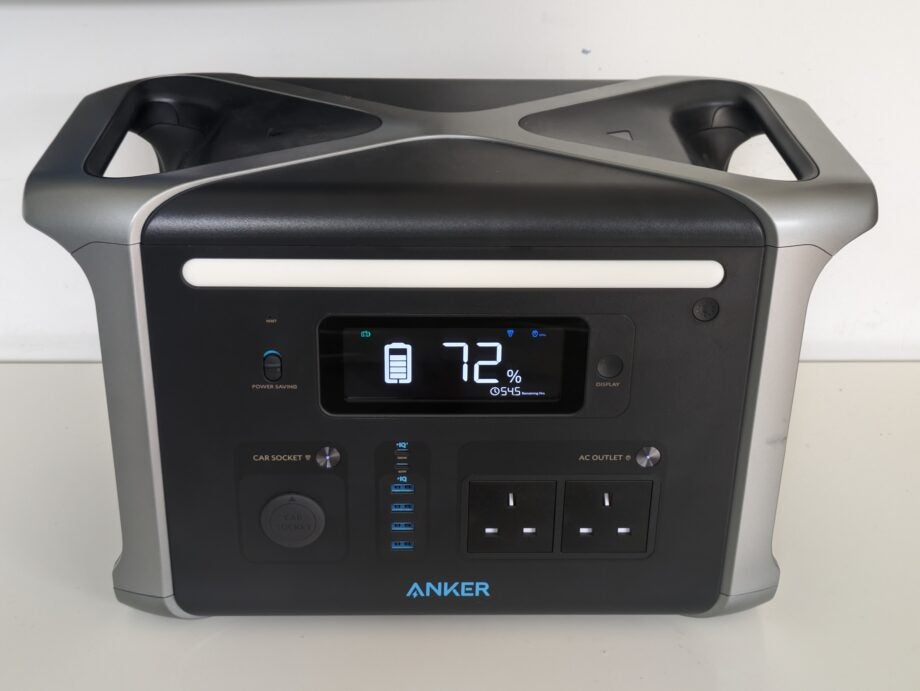

Verdict
Rugged, smart, and almost unflappable, the Anker SOLIX F1200 is a brilliant device for backup power around the home, or medium-duty devices on a camping trip. While it’s unavoidably fairly big, heavy and expensive, it stores plenty of power, has quite a high output, and offers a wide range of inputs and outputs. It’s ideal for all but heavy-duty applications.
Pros
- Good range of ports and functions
- Rugged, smart design
- Excellent output performance
Cons
- Can’t handle the most powerful devices
Key Features
- A medium-large power bankThis is a fairly large and heavy power bank, capable of providing off-grid or backup power to all but the most demanding devices
- A good range of ports and functionsPlenty of highly specified output ports, together with multiple charging options
Introduction
Smaller power banks are perfect for casual campers, or keeping small gadgets going in a power cut, but you’ll need something with a bit more poke to power household devices. The Anker SOLIX F1200 might be just the ticket.
Formerly known as the Anker PowerHouse 757, it can store 1226 watt-hours (Wh) of power, and provide up to 1500W to devices connected to its AC sockets. That makes it a medium to heavy-duty power source, ideally suited to longer camping trips, or getting fridges, coffee machines and other household devices through a protracted power cut.
Design and features
- Rugged and smart, but heavy
- Great selection of ports and functions
- Thoughtful design and layout
There’s no getting away from it: with a capacity north of 1.2 kilowatt hours (kWh), the SOLIX F1200 contains a lot of batteries. Accordingly, it’s pretty heavy, weighing in at 20.1kg, but Anker has done a great job with the design. For a start, it feels bullet-proof – Anker says its ‘drop-proof design’ protects the batteries and electrics in a sturdy aluminium frame, wrapped in thick, moulded plastic. There are two big handles, so you can lug it around the house, or share the load if you’re walking it to a camping berth.
I don’t think it’s quite as easy to carry as the Jackery Explorer 1500 Pro, which has one very large handle.
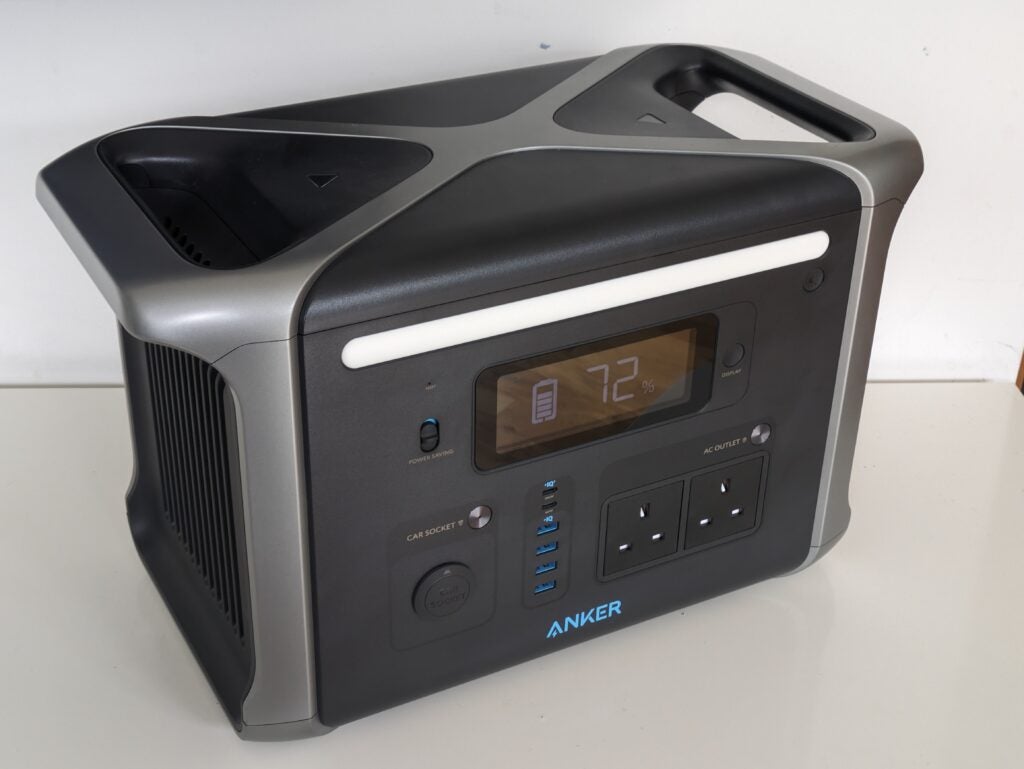
Underneath, two huge, ribbed rubber pads provide a stable and slip-free base.
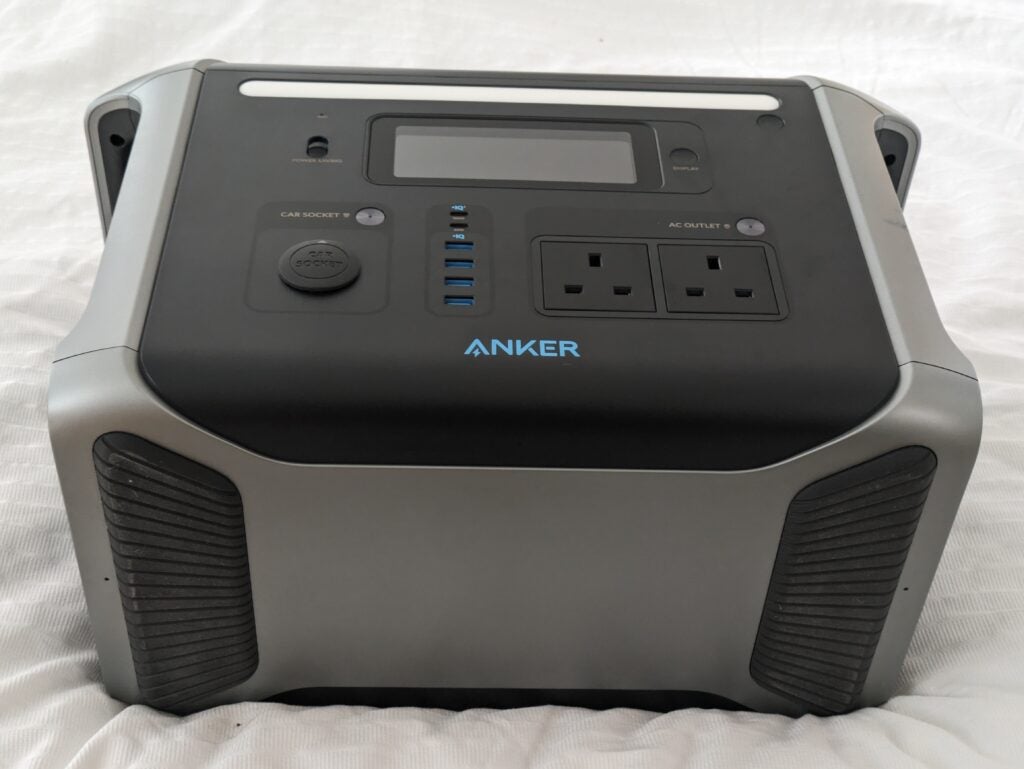
The F1200’s front panel offers two AC power ports and a 120W cigarette lighter-style car power port. Both have on/off switches, and both have a power-saving mode that shuts them down if there’s no significant load. You can turn this off for important, low-power devices such as a CPAP machine.
In addition, you’ll find four USB-A ports, each rated at 12W, together with two USB-C ports. One of these is rated for 60W and the other a mighty 100W.
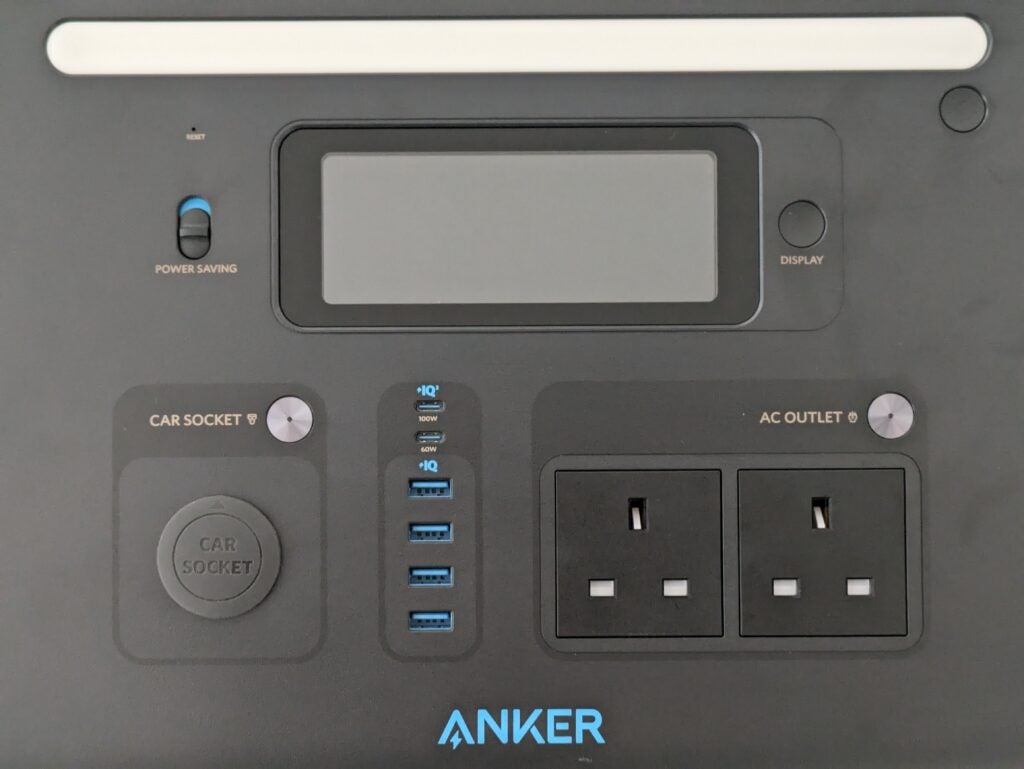
At the top there’s a warm-white strip light with three brightness levels and a maximum 4W power consumption. One of this power bank’s best features is its large, clear display, which among other things shows percentage battery charge, how many watts are coming in and going out, and how long it’ll be until the battery is full or empty, depending on the balance.
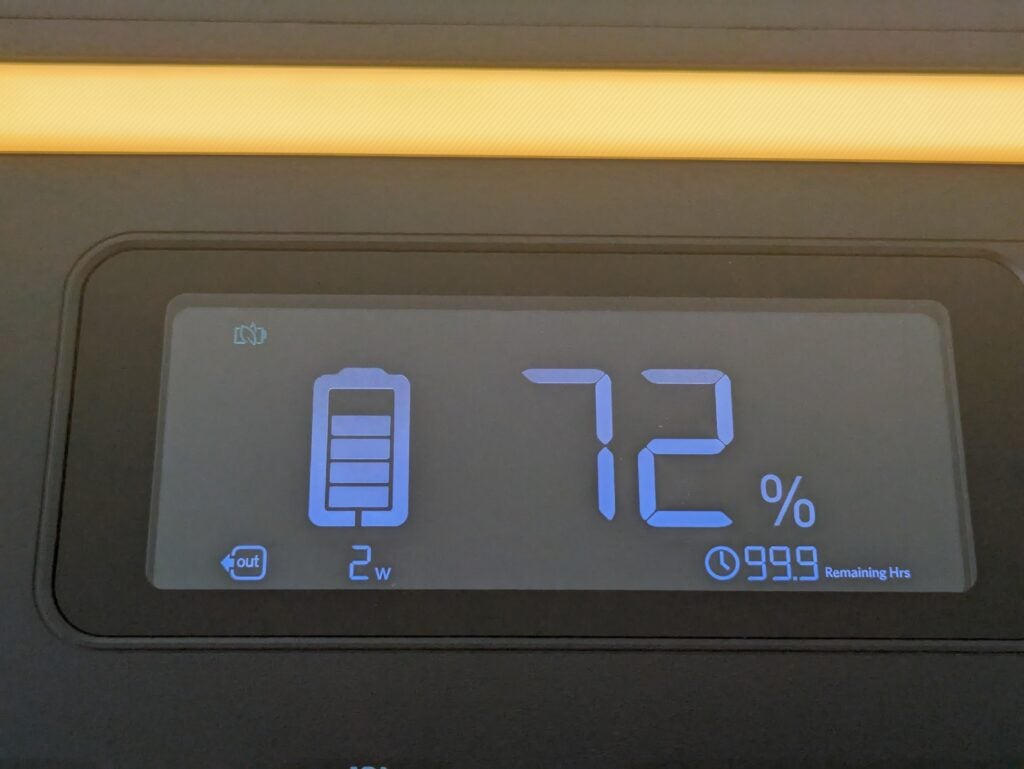
At the back there’s a flap covering an XT60 solar panel port and a kettle-style mains socket. The former supports up to 300W of solar input, while the F1200 will charge at one kilowatt (1kW) from the mains – enough to get to 80% in an hour.
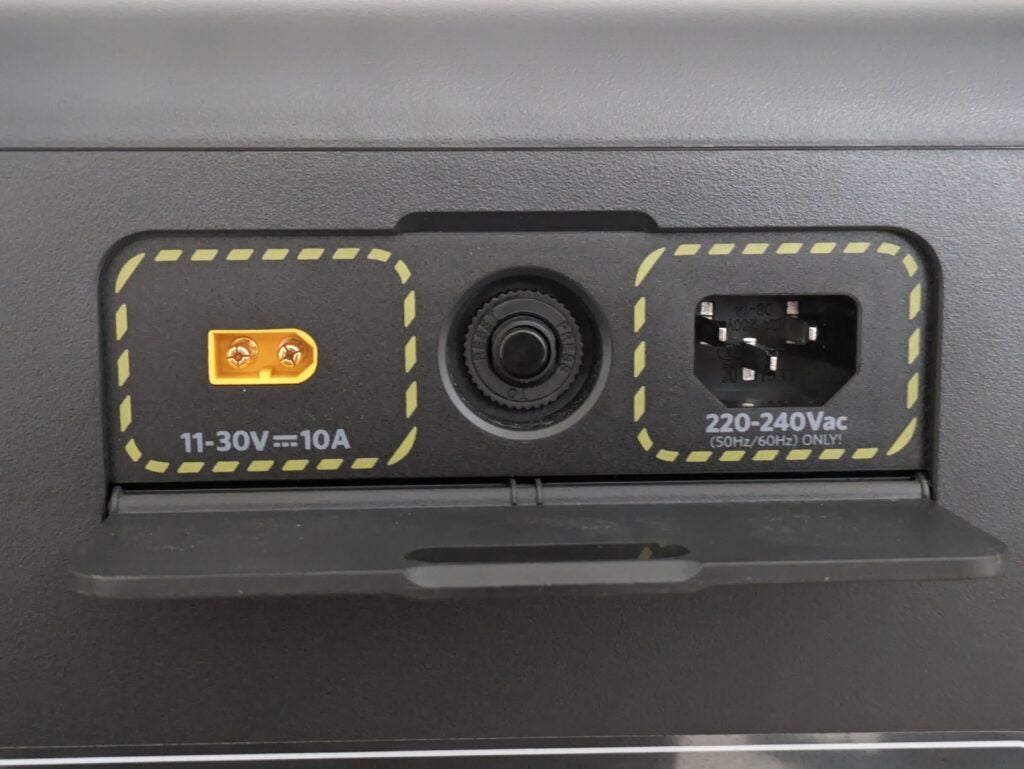
Anker says the SOLIX F1200 will power 95% of home appliances, by which it means that 95% of devices consume less than the 1500W this power bank can deliver. It’s worth noting, that’s shared between both AC ports, so you can’t connect two devices totalling more than that. All the ports can be used concurrently, however, giving the F1200 a theoretical total peak output of 1.8kW. At that rate, its 1.2kWh battery would be emptied in 40 minutes.
This power bank is suited to use as an uninterruptible power supply or battery backup. There’s an AC bypass circuit, so it can provide its full rated power even when charging the battery. However, there’s no alarm to warn you when the charge is nearly exhausted, and no data connection to force the orderly shutdown of connected computer devices.
Charging
- Charge from mains, car or the sun
- Maximum 1,000W input
- Fast charging, even while providing power
The Anker SOLIX F1200 is quite well specified when it comes to charging. As I’ve mentioned, it can charge the battery at 1kW, but this isn’t reduced by small or moderate loads plugged into its ports. Mains electricity bypasses the charging circuit, which is more efficient than first converting it to direct current and back again.
This bypass arrangement means that, like a true UPS, the F1200 needs to switch its AC ports over to battery output if there’s a power cut. Anker says this happens in less than 20 milliseconds, which ought to be fast enough to prevent IT equipment falling over. Sure enough, it worked seamlessly with the devices in my home office setup.
Although I’m testing the F1200 as a stand-alone product, you can buy it bundled with three 100W solar panels in a kit costing around £2200. In this form it’s known as the Anker SOLIX Solar Generator 757, which begins to get a bit confusing. The bundle includes three Anker 625 Solar Panels, which I tested as part of my Solar Generator 521 review.
In optimal conditions these optional panels could recharge the F1200 in a little over four hours, but it’s likely to take a bit longer – especially if you’re powering a load at the same time. You’ll also need a fair amount of ground or roof space for three 1.5 metre long panels. I tested it with a single panel at literally the optimal moment – lunchtime on the longest day of the year. It produced an indicated 86W in the slightly hazy sunlight: close to the stated maximum.
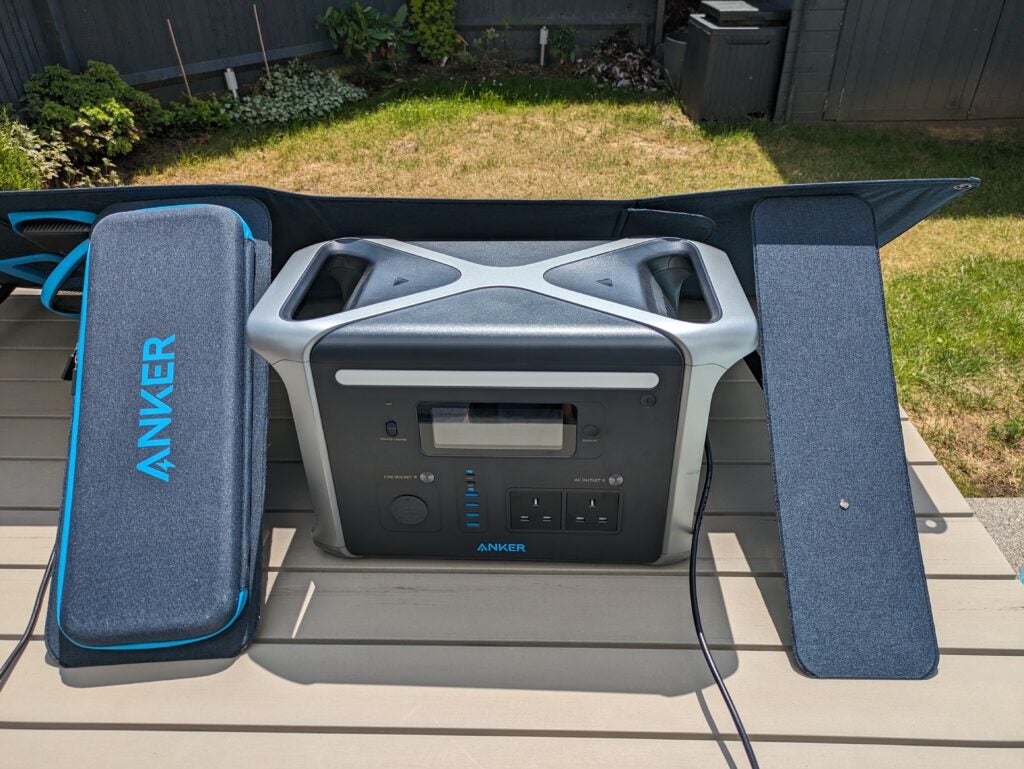
The F1200’s final charging option is via the included car charging lead, which is limited to 120W. It’s a good feature, giving you the chance to recharge if you’re driving between campsites, although a full recharge could take longer than 10 hours.
Performance
- Rock-solid power output
- Good efficiency, except with low loading
- Loud fans on heavy load
I tested the Anker SOLIX F1200 across a variety of loads, both on battery power and while recharging the battery. As you’d probably expect, it coped perfectly in low and medium load situations, barely breaking a sweat even when supplying a few hundred watts for long periods. In my lowest load test, it powered a 33W air purifier for more than 19 hours, which I measured as a total output of 644 watt-hours (Wh). That’s only a little more than half the rated 1,226Wh capacity of the battery, though.
I had similar results when I used the F1200 to power my fridge overnight – it lasted 18 hours, and delivered a measured 672Wh. These comparatively low results, equivalent to a discharge efficiency of only around 53%, suggest quite a bit of power loss in the AC inverter, used to turn direct current (DC) from the battery into usable mains power. As there’s next-to-no loss when supplying DC, using the USB ports where possible is more efficient.
The F1200 excelled with heavier loads. As these deplete the battery more quickly, its inverter is operating for less time and less power is wasted. I used this power bank to operate several high-power devices in my kitchen over a day and a bit: it delivered 949kWh before the battery was finally drained. Assuming it was filled to capacity before I started, that’s an altogether more impressive 77.2% discharge efficiency.
Connected to my power meter, the F1200 consumed 1.36kWh to fully recharge. Assuming that corresponded to a full refill of its 1.23kWh battery pack, that’s a respectable charge efficiency of 90%. Using these figures, I calculated a best-case round-trip (charge and discharge) efficiency of 70%, which isn’t bad at all.
Anker says this power bank’s LFP batteries will last for 3000 cycles – and it backs that up with a generous five-year warranty. Calculated for an 80% charge, that means the F1200 could store almost three megawatt-hours of electricity over its lifetime. Divide its purchase price by this capacity, and it comes out at a competitive 37.3p per kWh.
Given Anker’s claim that this will power 95% of devices, I conducted some additional tests at very high loads. The F1200 was completely comfortable supplying about 1.1kW to my toaster and, separately, about 1.3kW to the microwave. Such high loads caused the cooling fans to fire up, but while they were quite loud, they quickly stopped again once my toast had popped.
This power bank is rated for a 1.5kW maximum, but I tested it with my kettle, rated at 1.8kW. While I don’t recommend you overload any power bank in this way, the F1200 was utterly unphased. I used my power meter to confirm it was supplying 1,518W at 225V, with the current limited to 6.8A. It was able to sustain this for the five minutes needed to boil a full jug, then boil a second full load immediately afterwards – an impressive display that suggests this is a well-engineered product. When I added my toaster, for a demand almost twice the rated output, the F1200 shut down instantly.
I repeated the kettle test with the F1200 charging at an indicated 999W. In this case the mains bypass allowed it to meet the kettle’s full 1.8kW demand, while the charging rate dropped to an indicated 450W. Again, I wouldn’t recommend this test, but the F1200’s excellent performance in these tests suggests it has a bit of spare capacity, and is built to take some abuse.
Latest deals
Should you buy it?
You need a lot of power on the go: If you need a portable, stable power supply, this is impressively solid and versatile
You have lighter requirements: It’s overkill for smaller trips or lightweight applications
Final Thoughts
With an underwhelming efficiency on light AC loads, I can’t strongly recommend the Anker SOLIS F1200 for low-load applications – unless you can connect via USB.
This caveat aside, it’s an excellent bit of kit. It’s rugged and comprehensive, has a fairly high capacity, and is comfortable powering high loads up to its 1.5kW maximum. Add in solar compatibility and a fast, 1kW recharge rate, and it’s ideal for group camping trips or as battery backup for medium-duty appliances around the home. If you need more power, then the expandable Dabbsson DBS2300 is a better bet.
How we test
We test every battery station we review thoroughly over an extended period of time. We use standard tests to compare features properly. We’ll always tell you what we find. We never, ever, accept money to review a product.
Find out more about how we test in our ethics policy.
We test with a variety of devices to see how long the battery will last.
We test different charging methods to see how quickly the battery can be topped up.
FAQs
This power bank will happily supply a fridge, and most toasters, coffee machines or microwaves. Although it did power my 1.8kW kettle, it’s not heavy-duty enough for a typical 2.2-3.0kW kettle. It’s also not powerful enough for a washing machine or dishwasher. The Anker SOLIX F1200 is powerful enough for most condenser tumble driers, but it can’t meet the demands of an older vented drier.
Although it’s got two big handles, this is a heavy device. A fit individual could probably carry it up a couple of flights of stairs or perhaps a few tens of metres, but it would quickly prove very hard work. It doesn’t take up too much space in a big car boot or a camper van, however, and two people working together could easily get it a few hundred metres from car park to campsite.
Yes – you don’t have to use Anker’s panels. It should work with any set rated between 11-30 volts with a 10 amp maximum output. It uses a standard XT60 connector.

